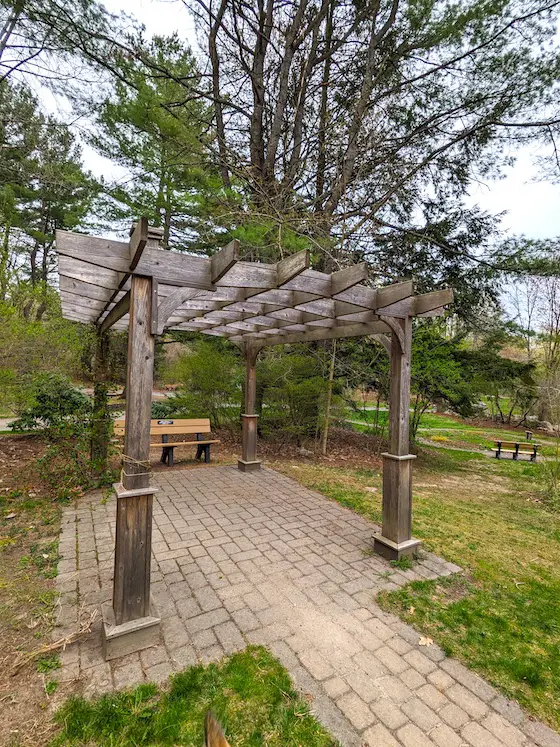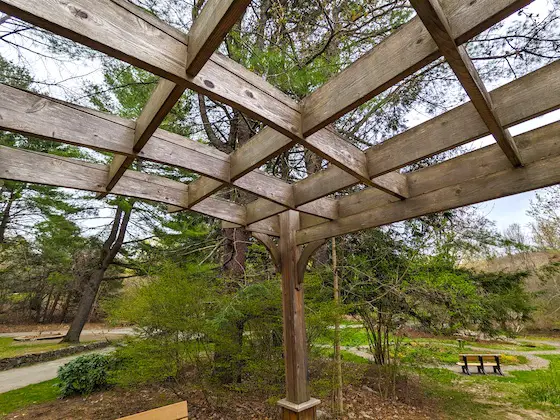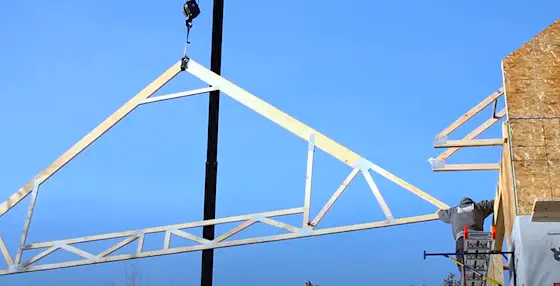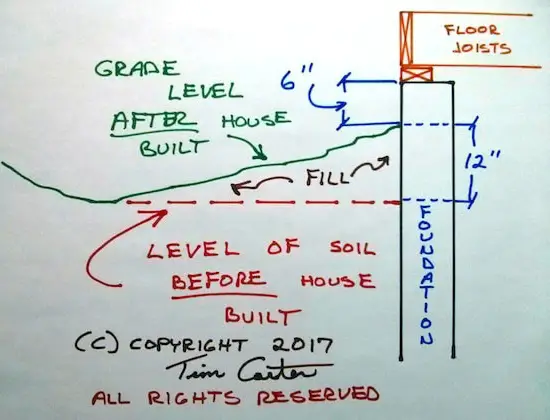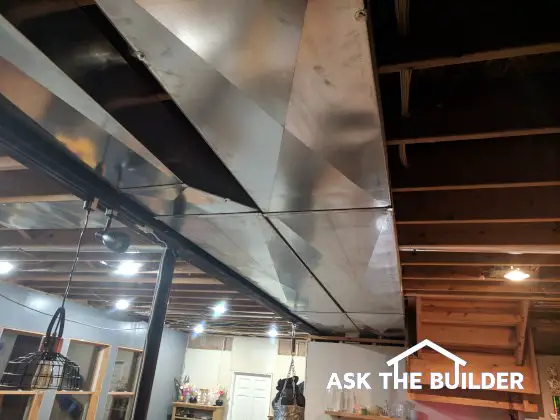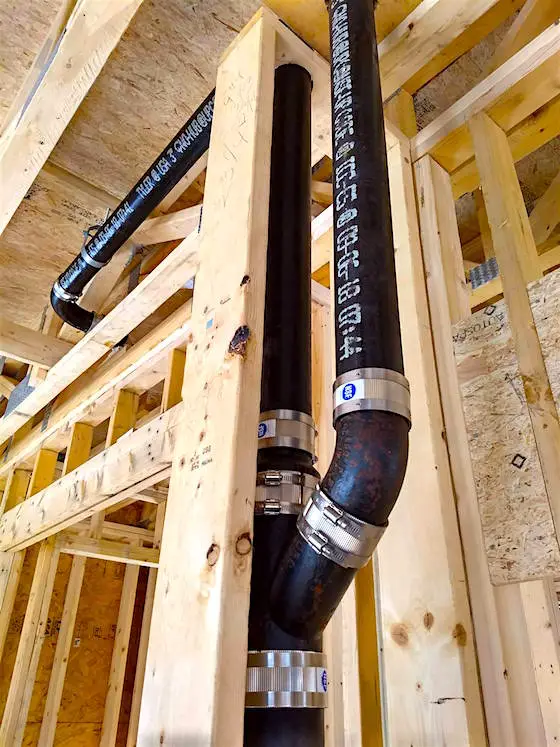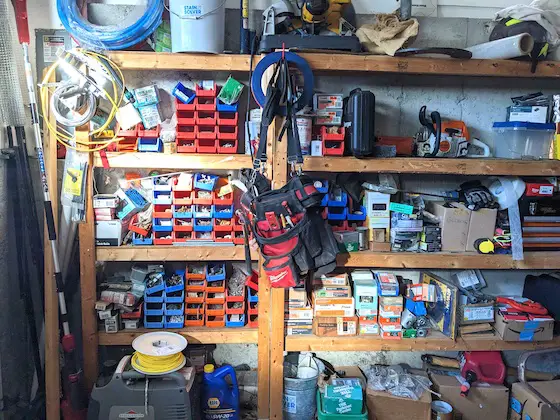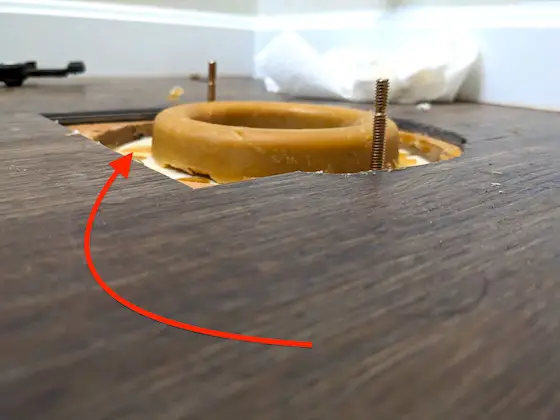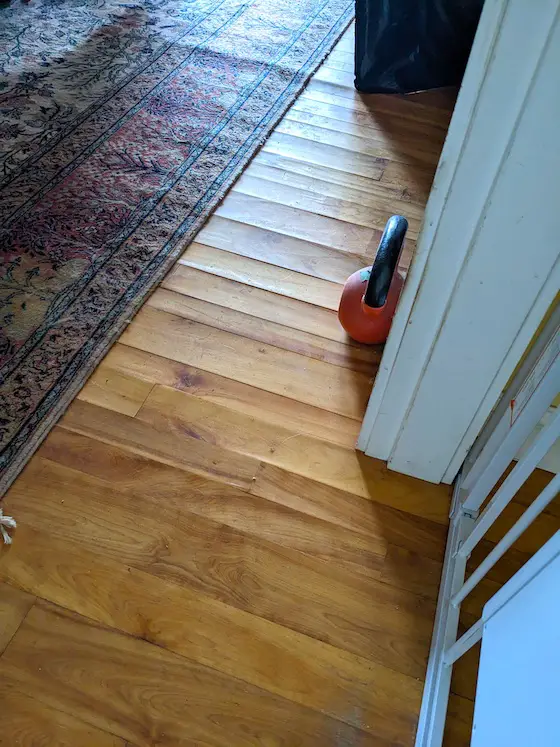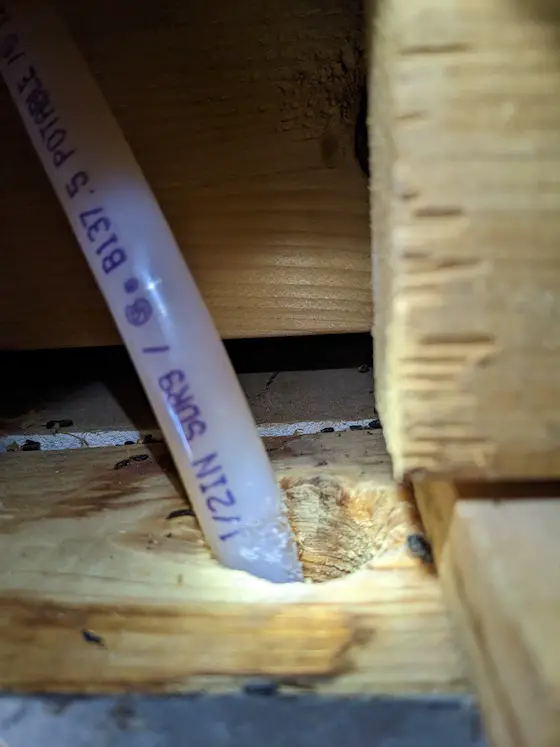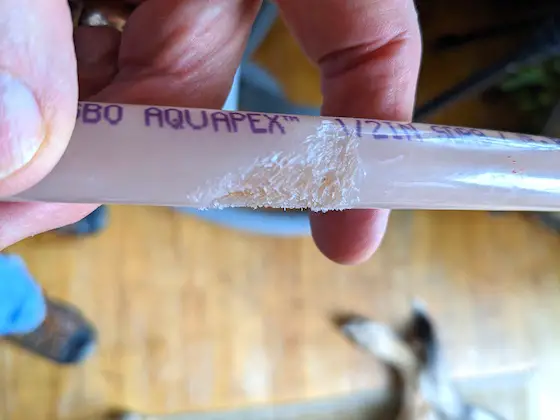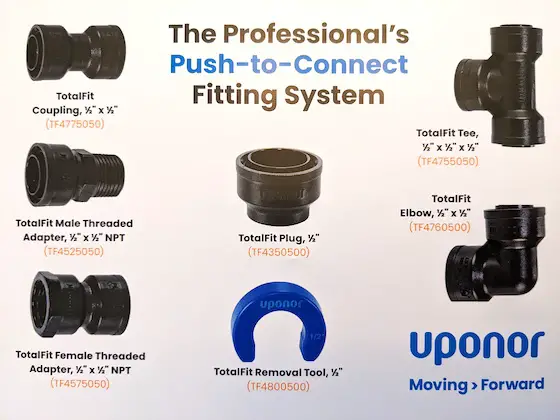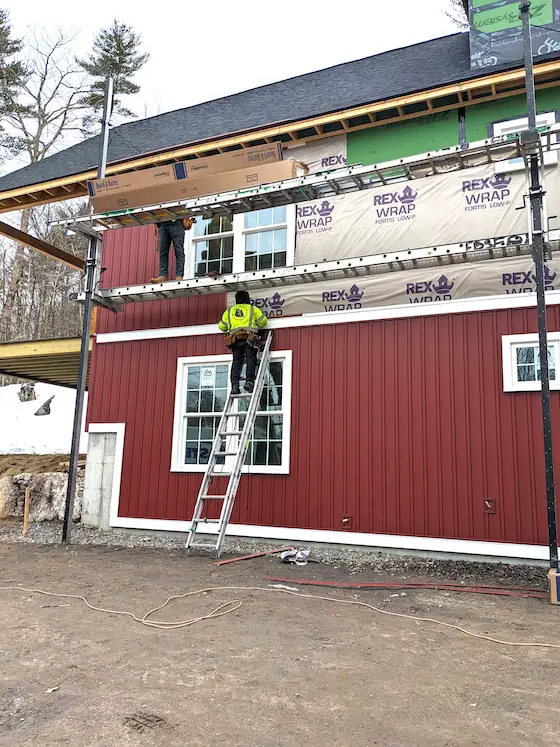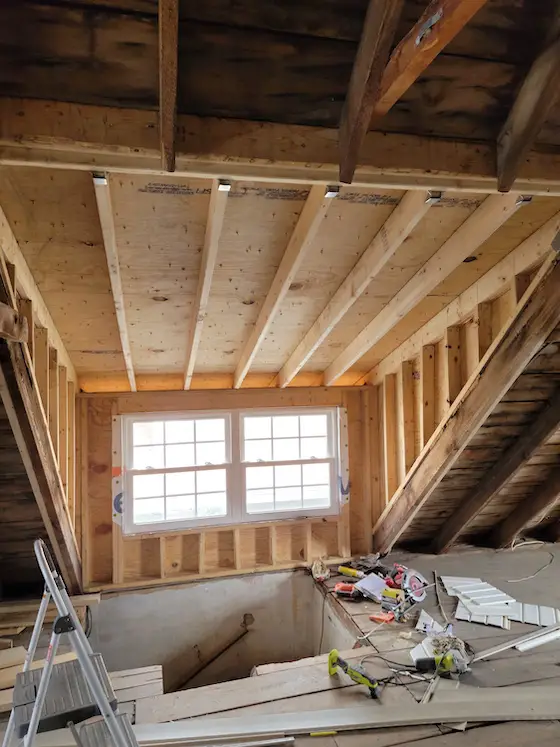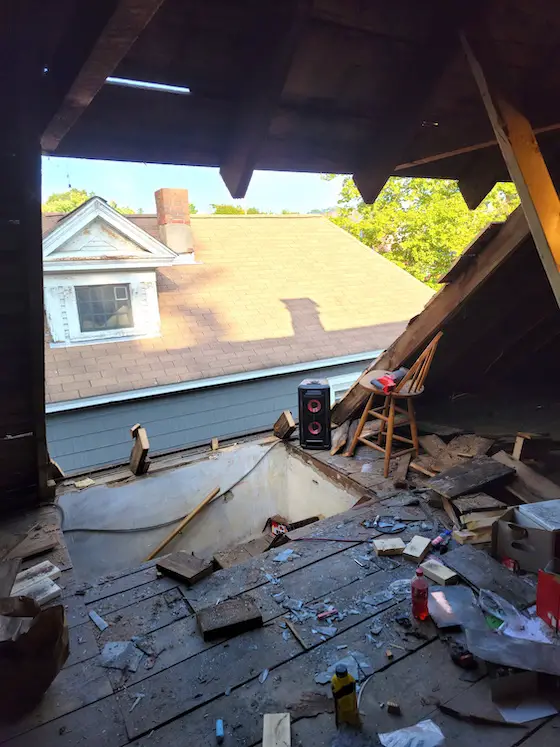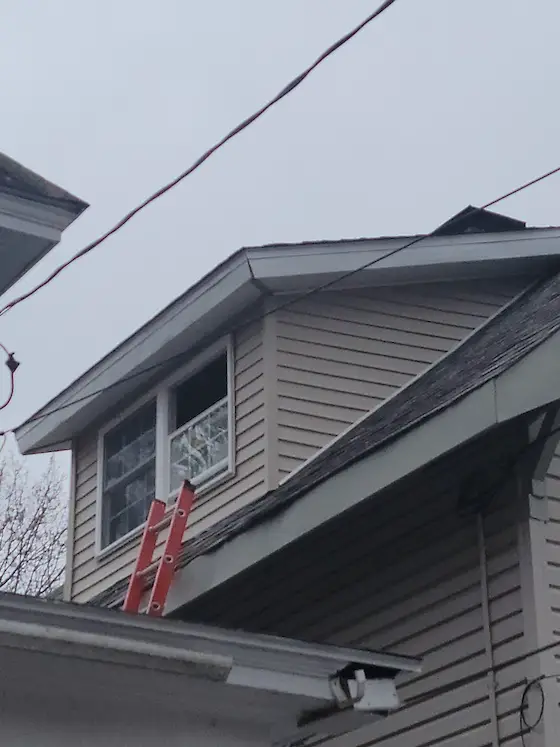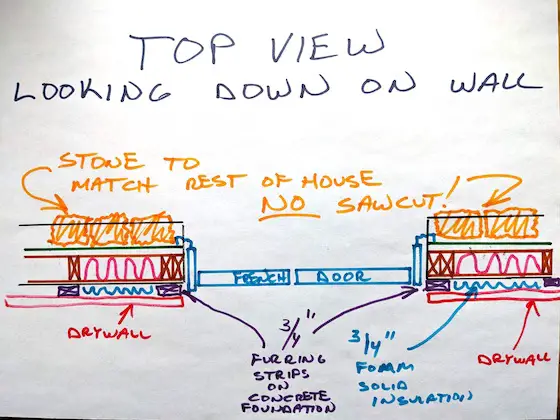
DIY PEX Water Lines -These are the hot and cold PEX water lines in my own home. I know it appears complex like spaghetti thrown on a wall, but it’s not. DIY plumbing has never been easier. Copyright 2023 Tim Carter ALL RIGHTS RESERVED
DIY PEX Water Lines - You Can Do It
Are you finding it difficult to get people to work on your home within your budget? Each day visitors to my website share horror stories about out-of-control prices being charged by workers. Inflation is raging and the economic law of supply vs. demand is in play.
I’m blessed to be able to use this column to share my knowledge. It allows me to empower you to do many jobs you might never think of doing yourself. Just this past week I saved myself about $500 by installing a new venturi fan in the bowels of my combo high-efficiency boiler. It looked intimidating once the cover was off the front of the boiler but the step-by-step instructions that came with the replacement part made the job very easy.
Allow me to share some of the forty-five years' worth of plumbing experience I have in my tiny gray cells. I’ve been a master plumber since 1981 and love to teach others how to install water lines, drain and waste pipes, and vent pipes. Just two years ago I helped Zoe over the phone. She installed all of the plumbing pipes in her new home in New Mexico. If Zoe can do plumbing work, by gosh so can you!
In the past, working with water lines required a decent amount of experience. You had to know how to solder copper tubing. I recorded a step-by-step video of this process over twenty years ago. Watch it now as it's still relevant:
The great news is you can solder with a simple torch you purchase at a big box store. If you have an expensive tool, you don’t need to solder. You can use copper press fittings that seal the joint with a rubber o-ring. Here's how easy it is to use the copper press tool:
CPVC Was the First
That said, the advent of plastic has revolutionized the installation of water lines in homes. You have lots of choices today. CPVC tubing is one option and it’s decades old. When it first hit the market, it was the belle of the ball. Not so any longer.
In my opinion, the paradigm shift in residential plumbing happened with PEX tubing. Prior to this, every time you had to change direction using copper or CPVC, you needed a fitting. Installing those required time and expertise and each fitting became a possible leak location.
PEX Installs Like Electric Cables - Easy!
PEX tubing installs just like Romex electric cables. Imagine running a 50-foot-long garden hose through the joists of your home from the mechanical room to a second-floor bathroom. PEX is flexible and you can design your system like mine where you just have a fitting at the manifold in your mechanical room and the other fitting is at the shutoff valve under the faucet. Female dogs, cats, and other animals have manifolds on their chests so lots of little animals can feed at once. Manifolds are wonderful things to have in a plumbing system.
While I’ve never done an actual side-by-side test, I’d venture to say PEX saves about 95% of the labor I’d have used to install a typical run of copper tubing from a mechanical room to a faucet.
What would you say if I told you that you can purchase the hand tool to install PEX for less than $100.00? A plumber would charge you that just to start up his truck and drive to your home!
Would you believe me if I told you I could teach you how to install PEX fittings in less than one minute? You’d probably think I fell off a ladder and hit my head. Truth be told, it’s extremely easy to do. Watch this video:
PEX can be installed very similar to an existing daisy-chain setup as is often done with copper or CPVC. In this setup, you do not use a manifold. Instead, you have lots of fittings throughout the house where you branch off a larger pipe that works its way through the house. Think of how branches extend off a tree trunk or how your blood vessels are in your own body.
I prefer installing PEX using a manifold system. This uses more PEX tubing, but it eliminates all the fittings hidden in the walls and ceilings of your home. Each hot and cold water line feeding a faucet originates in the mechanical room. On the manifold, there’s a separate shutoff valve for each line. This allows you to turn off the water to a particular faucet while water flows to all other fixtures in the house. This is a dandy feature to have, trust me.
You can mix and match if you want. Let’s say you need to add a bathroom or a kitchen. If you have copper tubing in your home and want to use PEX, you just solder in a tee with a PEX adapter. The PEX attaches to the brass fitting and away you go!
Should you decide to run PEX yourself, be sure you always put a strong piece of tape on the cut end of the PEX. This prevents dirt, sawdust, wood chips, etc. from entering the pipe as you extend the tubing through your framing.
You can purchase all sorts of metal and plastic accessories that help you terminate the PEX under all your sinks. Be sure you read the installation manual that comes with the PEX and pay attention to hole sizes.
If you plan to run PEX to a bathroom rain-head shower be sure to run dual hot and cold lines to ensure you have plenty of flow. The same goes for large tubs. Don’t forget to insulate around all the tubs so the bath water stays nice and hot long enough for you to fully relax!
Column 1506
